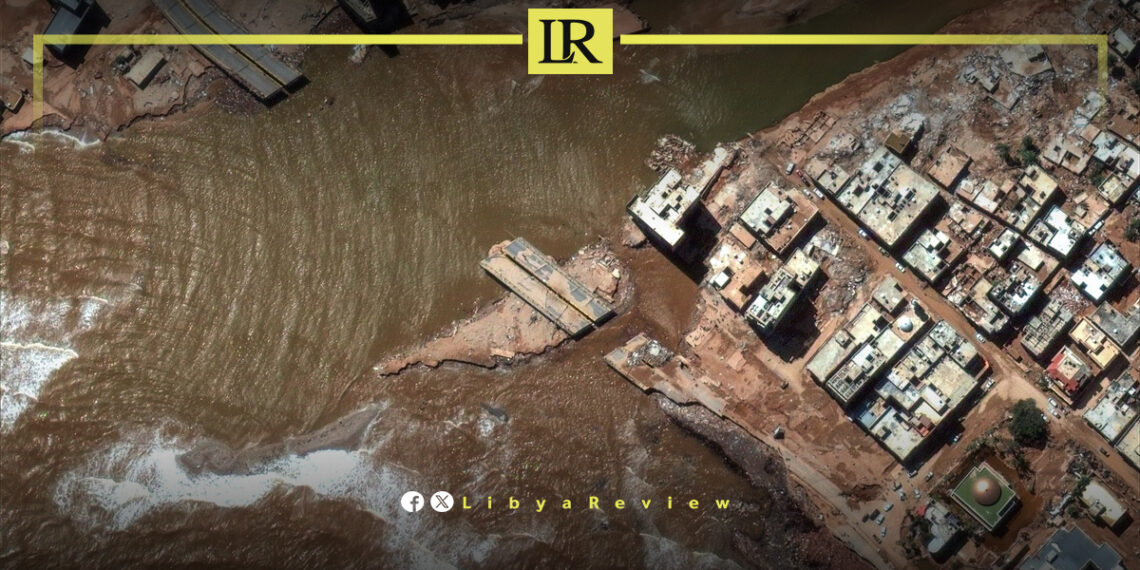Today marks the first anniversary of Storm Daniel, the most catastrophic natural disaster in Libya’s history.
On September 10, 2023, the storm hit Libya’s eastern coast, unleashing unprecedented destruction that claimed thousands of lives and wiped out entire neighborhoods. The devastation was particularly severe in cities like Benghazi, Al-Bayda, Susa, Al-Marj, Shahat, and Derna, with the latter suffering the most catastrophic damage.
The Mediterranean hurricane brought torrential rains, causing widespread flooding, landslides, and the destruction of homes, infrastructure, and essential services. The disaster’s severity was magnified when two dams in Derna collapsed on September 11, 2023, releasing over 20 million cubic meters of water from the Derna Valley, inundating the city and causing further devastation.
The flooding that followed Hurricane Daniel overwhelmed Libya’s capacity to respond, causing irreversible damage to homes, roads, schools, bridges, and the electrical grid. The storm dropped an unprecedented amount of rainfall, unlike anything the country had ever experienced. However, it was the collapse of Derna’s dams that turned the storm into an unparalleled disaster.
Built in the 1970s, the dams had been poorly maintained, and despite receiving funds for repairs in 2012 and 2013, the restoration projects were never completed. These aging structures, already damaged by a previous storm in 1986, were unable to withstand the massive floods triggered by Storm Daniel. The collapse sent a tidal wave crashing into Derna, destroying everything in its path.
In the aftermath, more than 4,000 people were confirmed dead, while approximately 8,500 were reported missing. The flooding left 45,000 people displaced as their homes were swept away. The International Organization for Migration (IOM) reported that around 24% of Derna’s area was submerged, leaving the city and surrounding regions in ruins.
The financial toll of Storm Daniel was equally staggering, with damages estimated at $4.3 billion. The scale of destruction affected not only homes and businesses but also critical infrastructure, leaving Libya to grapple with the long-term consequences of the storm.
Initially forming on September 1, 2023, as a tropical storm over the North Atlantic, Storm Daniel was expected to make landfall in France. However, as the storm gained intensity, it shifted direction towards the Eastern Mediterranean, eventually becoming a hurricane. Before reaching Libya, it hit Greece, Turkey, and Bulgaria, causing widespread damage and claiming 26 lives. But the destruction in Libya far exceeded that in other regions, as the hurricane’s final impact unleashed the worst flooding Libya had ever seen.
One year later, the scars of Storm Daniel remain deeply visible in the affected regions. While international aid has helped stabilize the situation to some extent, the recovery process has been slow. Thousands of Libyans are still without permanent homes, and many areas remain in ruins. The collapse of Derna’s dams has sparked outrage, with many demanding accountability for the lack of maintenance that contributed to the disaster’s scale.
The disaster has highlighted Libya’s vulnerability to extreme weather events, especially in a country already dealing with internal strife. As global climate change leads to more erratic weather patterns, the need for improved disaster preparedness and infrastructure management in Libya has become increasingly urgent.


